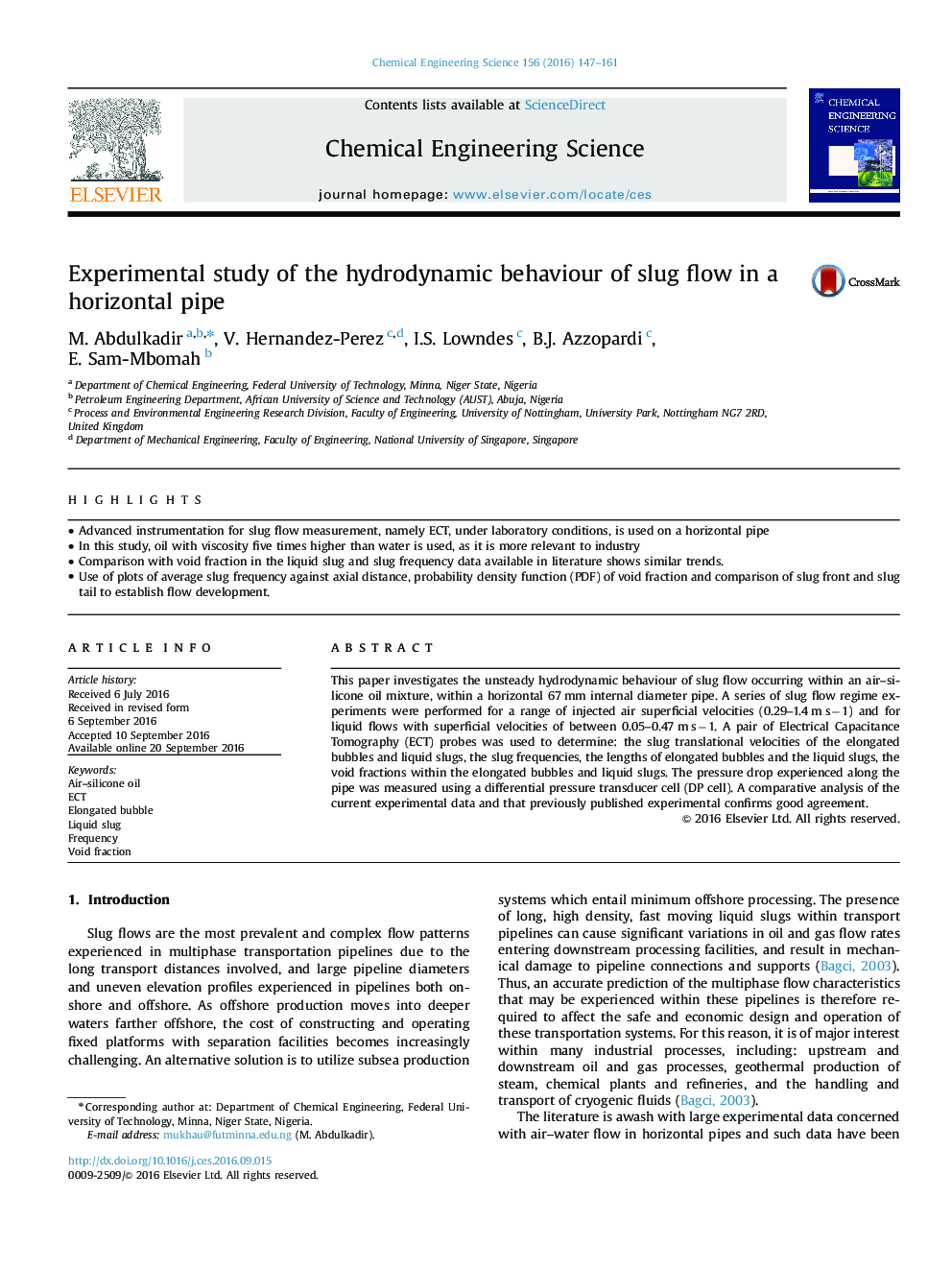| Article ID | Journal | Published Year | Pages | File Type |
|---|---|---|---|---|
| 6467822 | Chemical Engineering Science | 2016 | 15 Pages |
â¢Advanced instrumentation for slug flow measurement, namely ECT, under laboratory conditions, is used on a horizontal pipeâ¢In this study, oil with viscosity five times higher than water is used, as it is more relevant to industryâ¢Comparison with void fraction in the liquid slug and slug frequency data available in literature shows similar trends.â¢Use of plots of average slug frequency against axial distance, probability density function (PDF) of void fraction and comparison of slug front and slug tail to establish flow development.
This paper investigates the unsteady hydrodynamic behaviour of slug flow occurring within an air-silicone oil mixture, within a horizontal 67 mm internal diameter pipe. A series of slug flow regime experiments were performed for a range of injected air superficial velocities (0.29-1.4 m sâ1) and for liquid flows with superficial velocities of between 0.05-0.47 m sâ1. A pair of Electrical Capacitance Tomography (ECT) probes was used to determine: the slug translational velocities of the elongated bubbles and liquid slugs, the slug frequencies, the lengths of elongated bubbles and the liquid slugs, the void fractions within the elongated bubbles and liquid slugs. The pressure drop experienced along the pipe was measured using a differential pressure transducer cell (DP cell). A comparative analysis of the current experimental data and that previously published experimental confirms good agreement.
